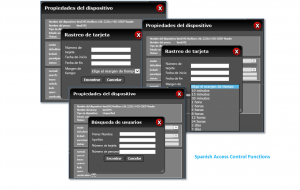Over the past 10 years, Physical Security Information Management (PSIM) has evolved tremendously outside of categories such as Video Management Systems (VMS), Access Control and Intrusion Detection, and companies worldwide have been using PSIM capabilities as a way to differentiate. Fast, integrated platforms offering real-time data and quick-reacting security solutions lay the foundation for this new digital movement. But as the security market continues to grow more crowded, creating reliable value-adds is an ongoing challenge for both vendors and integrators.
Legitimate PSIM is intelligent software that converts massive amounts of data into meaningful and actionable information by filtering and correlating the data based on time, location, duration, frequency, and type, and according to recent research, is estimated to be worth 112.43 Billion USD by 2021. While the definition of PSIM is often misunderstood as an integration platform or a command and control platform, the true nature of PSIM enterprise software is its capability to connect to other systems and subsystems including sensors and security and non-security related devices.
As PSIM has gained awareness globally, the demand for the software has increased and is driving large-scale projects, including many requests from U.S. federal government agencies. With customer and business process needs constantly evolving, software platforms must advance as well.
As innovations in PSIM continue, the platform has started to naturally shift towards a new platform, Converged Security and Information Management (CSIM).
CSIM extends software abilities beyond physical security by capturing and correlating data from multiple IT-security systems and information management systems. With capabilities for large-scale, widely dispersed customers, this advanced platform can be leveraged to support Smart City and IoT applications, in addition to a variety of use cases such as supply-chain systems, building management, logistics management, and manufacturing. CSIM can support customers globally where enhanced Enterprise Data Visualization and Enterprise Business Intelligence are integral features for reporting in real-time. Overall, the capabilities go beyond security and risk management by offering insights that can drive intelligent business decisions.
As the transition from PSIM to CSIM continues, there is a more formal cooperation between previously contrasting functions like physical security and IT security, and a substantial union between CSOs and CIOs has formed, encouraging organizational and operational convergences to align. In order to become more efficient and reduce risk to the organization, merging functions involves both process and accountability, accomplishing true business integrations around risk and compliance.
The shift to CSIM software can be leveraged globally by organizations and multi-site enterprises to garner beneficial, real-time situational awareness and management abilities, and can consolidate big data analytics tools, social media, and other intelligence inputs and tie in internal challenges with external threats. Now, enterprise leaders can have an extensive understanding of where threats are happening and their potential impact, allowing a more precise understanding of when and where crucial resources may be needed.
Interested in learning more about a CSIM solution for your business? Check out the Vidsys CSIM solution here.






